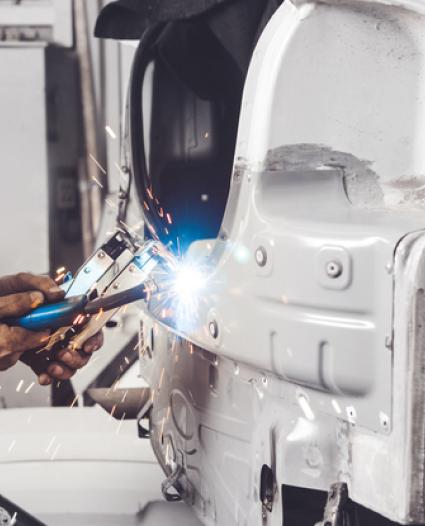What is high force? Examples include the force exerted on a box during lifting or the grip force to hold a hand tool. The loads lifted and grip forces exerted on objects outside the body are called external forces. If the external force is high then muscles around the joints must contract forcefully and create internal forces that loads the bones, muscles, ligaments etc. It is the high forces inside the body that can lead to the development of fatigue or MSD.
For example, a worker can hold a specific tool in either a power grip or a pinch grip. The worker has to use the same force (external force) to do the job using either grip. However, the forces in the muscle and bones of the hand and arm (internal forces) are much higher when using the pinch grip.
A power grip is good for tasks with high force. A pinch grip gives better precision BUT the forces in the muscles and bones are much higher. This can increase fatigue and the risk of developing MSD in pinch grips.
Another example would be holding a weight in the hands, an external force. If the arms are hanging down and holding the weight at hip level, the internal loads in the muscle and ligaments of the shoulder are low.
Compare this to the situation where the arms are stretched out horizontally at shoulder level. The load creates a high torque about the shoulder. (It is also called a high “moment of force” or more simply a “moment”). Now, although the weight is the same, the internal loads in the muscle and ligaments of the shoulder are much higher. This is why loads should be held close to the body to reduce internal forces. Again, it is these internal forces that can lead to fatigue and injury.
Low Back Forces
How the design of the workplace affects the weight that can be handled during Lifting and Lowering:
Different arrangements of the workplace and the load to be lifted strongly affect loads in the spine and thus the weights that can be handled.
The National Institute of Occupational Safety and Health (NIOSH) in the USA created a tool called the NIOSH Equation. It can be used to assess lifting tasks but in this section it gives a good idea of how design of the workplace changes the tolerance of the spine.
A different approach to understanding how the design of the workplace affects the load tolerance of the spine during lifting and lowering is seen in a tool developed by the American Conference of Governmental Industrial Hygienists, or ACGIH for short.
Watch the video explaining the 6 Factors affecting Lifting and a pdf document including this information can be downloaded here.
Use these videos and graphics to help identify hazards as well as refer to them when using low back assessment tools.
To find more tools that help identify low back hazards and assess work go to the resource library.

Want to search the resource library?
Find all the available resources on the MSD prevention website, including posters, videos, and links to relevant websites.

